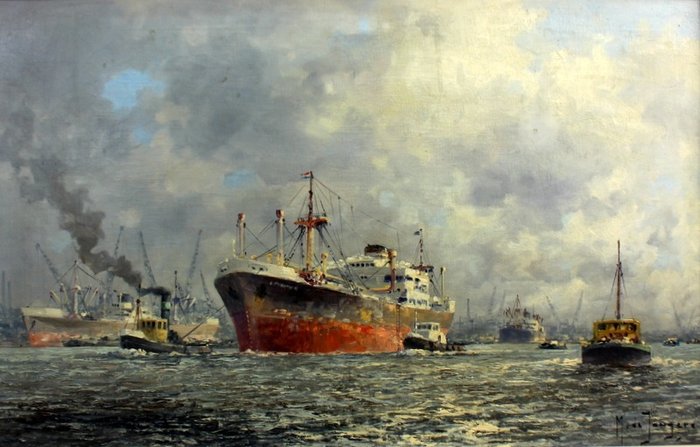
Gerardus (Gerard) Johannes Koekkoek (1871-1956) - Bateau en mer du Nord.
Nr. 30810597

Nr. 30810597

Drulman worked and lived mainly in Rotterdam and is known for his harbour views as a typical Rotterdam painter. However, he originally came from Amsterdam.
Drulman studied at the academy of fine arts in Rotterdam. As an artist, he used the pseudonym Marius de Jongere; this was a reference to his stepfather, the painter and etcher Marius Janssen. Only during the German occupation, he signed his work with the name Drulman, because the artists were not allowed to work under an alias in that time.[1]
His style was naturalistic-impressionistic. He had his most productive period in the 1950s and 1960s, at the time of the rise of the ports of Rotterdam. Drulman became known for harbour views, as was Evert Moll and his generation colleague Cornelis van der Zwalm. Apart from harbours and ships, he also painted portraits and landscapes, often from the polder landscape around his studio in Hillegersberg. He owned a house in Switzerland, where he made a number of mountain landscapes.[2][1]
He was a member of artist association Rotterdam.[3] He made trips to Belgium, Germany, France and Switzerland.
The Kamper Museum owns work by Drulman. According to a number of sources, the American vice-president Lyndon B. Johnson bought five landscapes during a visit to the Netherlands in the 1960s in the studio of Drulman. (Source Wikipedia.)
Comes with wooden frame with mat. Signed on the back with the title, and signed on the front in the bottom right corner.
So kaufen Sie auf Catawiki
1. Etwas Besonderes entdecken
2. Höchstgebot abgeben
3. Sichere Zahlung durchführen